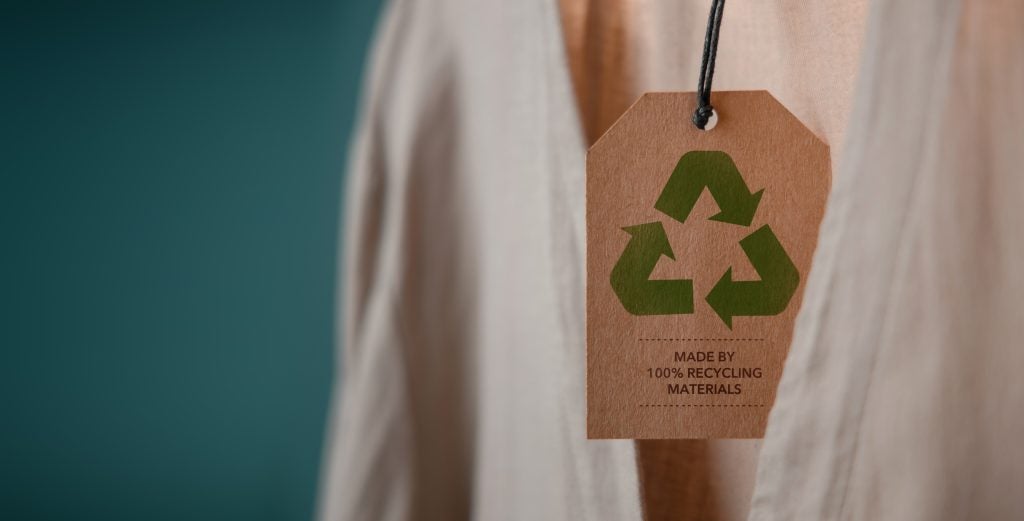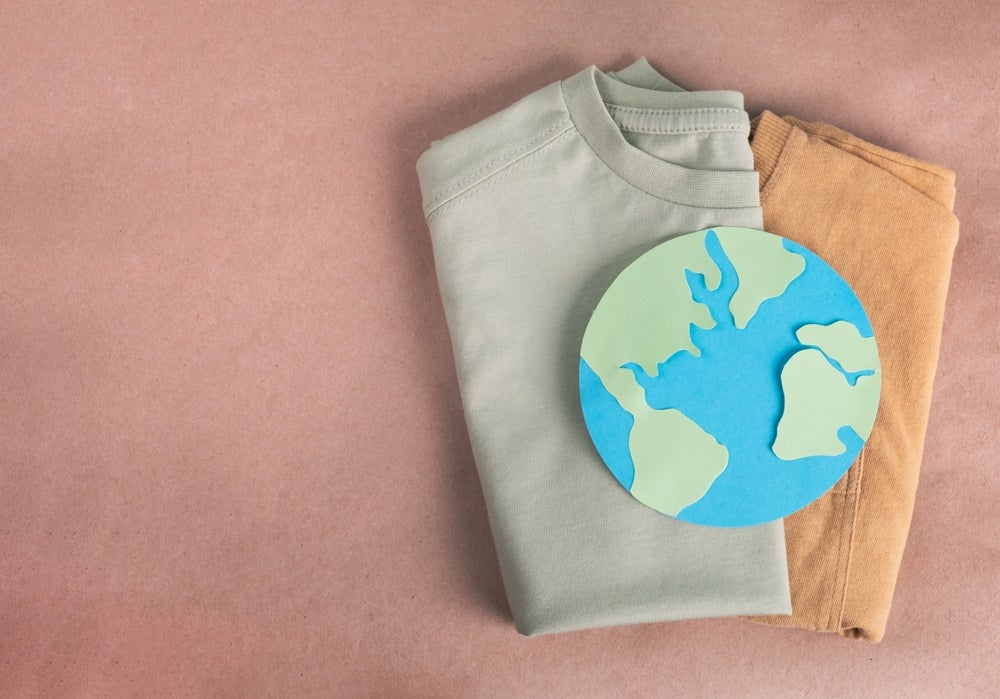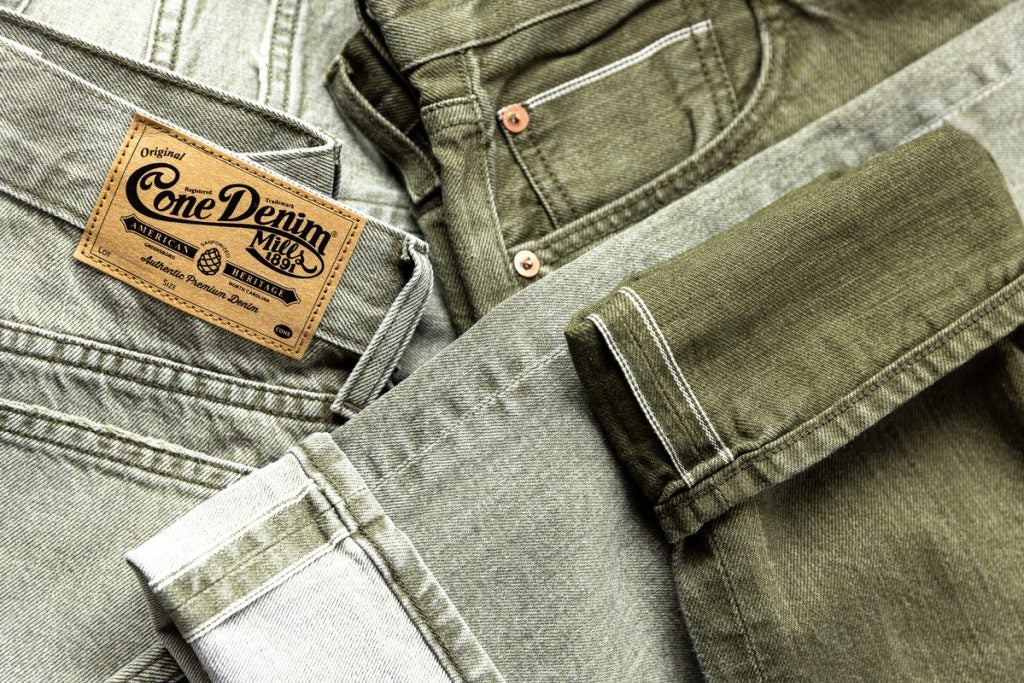
Despite current efforts to create more eco-friendly fashion, the industry needs a more deliberate approach to integrating sustainability across the entire value chain. Here Feng Xin, VP of downstream business & corporate development at viscose major Sateri, sets out three key areas that should be addressed.
Fashion has always played a dual role in society, both practical and expressive. We are now seeing fashion play another role: pastime, with shopping for clothing becoming a form of entertainment in many respects.
Demand for fashion has grown rapidly in recent years, and this will only increase as clothes continue to become cheaper and mindsets shift towards seeing apparel as short-term consumables rather than practical items of long-term value. These factors have combined to make fashion disposable.
Another key development altering the structure and operation processes of the industry is how demand has shifted beyond traditional high-spending areas to become truly global. The McKinsey Global Fashion Index indicates that more than half of apparel and footwear sales will originate outside of Europe and North America, focusing on countries across Asia-Pacific, Latin America and other regions. Fashion expenditures are also set to rise to US$1.4 trillion by 2020, according to Forrester. When expenditure rises, so does consumption – and not necessarily in a sustainable manner.
Just how much of the clothing we buy is not needed? According to WRAP’s 2017 report on ‘Valuing Our Clothes and the cost of UK fashion,’ the value of unused clothing in wardrobes has been estimated at around GBP30bn (US$37.7bn) in the UK alone, while about GBP140m worth of clothing goes into landfill each year. In addition, large fashion houses were found to have been burning unsold goods to protect their brand’s products – an added harm to the environment.
See Also:
All of this demand, and the industrial activity needed to meet it, adds up. Large-scale manufacturing of “fast fashion” has resulted in increased levels of pollution and waste. According to a 2018 paper in the scientific journal Nature Climate Change, textile production produces 1.2 billion tonnes of CO2-equivalent emissions every year – more emissions than international flights and maritime shipping. The United Nations (UN) believes that the fashion industry generates approximately 10% of global emissions.
How well do you really know your competitors?
Access the most comprehensive Company Profiles on the market, powered by GlobalData. Save hours of research. Gain competitive edge.

Thank you!
Your download email will arrive shortly
Not ready to buy yet? Download a free sample
We are confident about the unique quality of our Company Profiles. However, we want you to make the most beneficial decision for your business, so we offer a free sample that you can download by submitting the below form
By GlobalDataImportantly, consumers are starting to become more conscious of how their clothes are produced and what kinds of materials are being used to do so. They are putting pressure on the industry to take action, rather than expecting to shift their own consumption habits. Brands, producers and suppliers are now expected to integrate social and environmental themes into their products and services. They are taking sustainability seriously to address supply chain issues and environmental shortcomings.
Initiatives to reduce non-renewable resources from fashion companies and houses are on the rise. Forty-three companies – including brands such as adidas and Burberry, retailers such as Target and supplier organisations – pledged to find ways to reduce emissions in their value chains as part of the Fashion Industry Charter for Climate Action launched at COP24 in Katowice, Poland, last year.
It is encouraging to see the entire industry band together and commit to be more open and transparent in publicly reporting Green House Gas (GHG) emissions as they collectively aim to reduce these emissions by 30% aggregate by 2030.
Furthermore, companies and fashion houses such as Uniqlo, Zara, H&M and mostly recently PRADA have been taking innovative steps to speed up sustainability in the fashion industry with their recycled nylon material. Prada’s Re-Nylon bag is one such example.
Despite this progress, and platitudes from different stakeholders across the industry, there is still far more we need to do before we can claim that fashion has become eco-friendly. With growth for the worldwide apparel and footwear market pegged at around 5% per year till 2030 by Euromonitor analysts, the strain on our planet’s resources is set to compound.
Three key areas we need to address
#1 – Integrating sustainability across the entire value chain
We need a more deliberate approach to integrating sustainability across the entire value chain, rather than implementing token CSR-centric initiatives. This is particularly crucial in textiles, which has one of the world’s longest supply chains.
Textile suppliers have started doing their part. For example, Asia Pacific Rayon’s (APR) ‘Follow Our Fibre‘ provides traceability and transparency over its viscose-rayon production value chain from seed to fibre through enterprise blockchain technology. This allows APR customers to trace its finished products back to their plantation origins based on value chain data recorded on blockchain.
Similarly, Sateri’s Tracer is an example of an initiative linking producer to consumer, where the company’s fibres are embedded with a tracer that can be detected through a scanner to give consumers the confidence that they are buying a garment that is authentic, and sustainably sourced and manufactured.
#2 – Innovation breakthroughs
While the aforementioned unified pledge and declaration from companies are definite steps in the right direction, it is important that they now act on their words. As leaders who can influence the right kind of change, they are held more accountable for leading eco-friendly campaigns and actions.
Failure to scale beyond special collections and lines, or simply exploring “vanity projects” that showcase sustainable fashion without a firm commitment to extending the approach across the entire business, limits meaningful impact.
Technology has proven to be a great tool in alleviating our burden on the Earth’s resources. It enables us to optimise the use of natural resources and finds new ways of maximising utility of present resources already in use in the economy.
A consortium of like-minded companies comprising RGE, H&M Group, Virala and Fortum have invested in Infinited Fiber Company to scale up its technology which turns textile waste and other pulp-based materials into new textile fibres. This closes the waste loop for textile manufacturing. The aim to eventually commercialise this technology serves as a substantial first step towards eco-fashion, and proof that the concept is realistic and achievable.
#3 – The industry’s carbon footprint
At the end of day, decarbonisation is the ultimate remedy to climate change. Yet there are some ugly truths we will need to confront before we can really address this issue. Popular material cotton uses 25% of the world’s pesticides, while recycling of textiles may involve processes that leave a larger carbon footprint, including the logistics behind storing textiles, the chemicals and energy needed for shredding, and the process for extracting colour and fibres.
Retailers have to recognise that they need to be the drivers of change both for themselves and the industry. One way to do this is by turning the focus to more sustainable options, such as viscose or other plant-based cellulose fibres that are biodegradable.
Regardless of the raw materials used, we need to consider the renewability of these materials. Any innovation in this area should not be at the added cost of more carbon emissions. Innovation by us also needs to be for us. It is our responsibility to be pioneers of new and radical solutions that will help prolong the health of our environment and create a better world.
This does not come without challenges. It will be difficult to scale eco-friendly initiatives on a global level, but through strategic collaborations that engage and involve every stakeholder – be they manufacturer, consumer or decision-makers – we can make a critical difference.
Aligning with these stakeholders and getting them on board our journey towards sustainability progress is what is needed to drive these initiatives at a scale that can rival the amount of pollution and waste being dredged up through textile production. Working together will ensure our efforts have impact.








Related Company Profiles
Forrester
M GROUP INC
WR-AP
Uniqlo Co Ltd
Target Corp